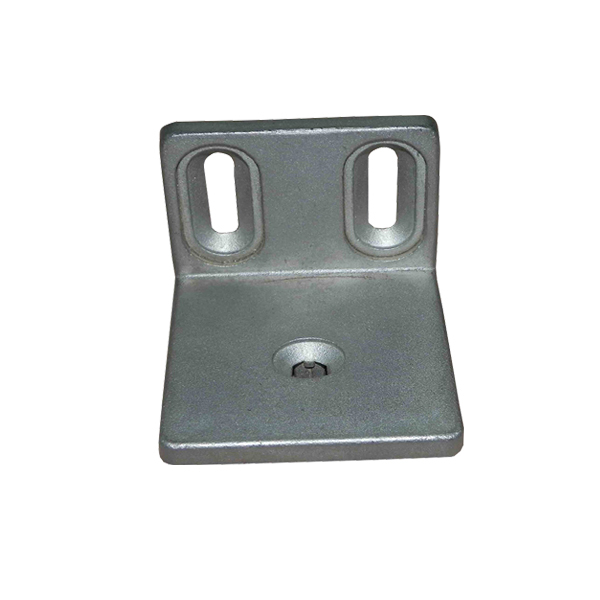Detailed description of Ductile Iron Water Glass Casting
2024-06-28
Ductile iron water glass casting is a manufacturing process that combines the benefits of ductile iron's mechanical properties with the precision and versatility of the water glass casting method. This process is widely used in various industries to produce complex and high-strength components. Here’s a detailed description:
Material: Ductile Iron
1. Composition:
- Iron: The primary component.
- Carbon: Present in the form of graphite nodules, typically around 3-4%.
- Silicon: Around 2-3%, used to promote the formation of graphite nodules.
- Other Alloying Elements: Such as manganese, magnesium, copper, and tin to enhance specific properties.
2. Properties:
- High Strength: Superior tensile and yield strength compared to gray iron.
- Ductility: Exhibits significant elongation before fracture, making it resistant to impact and fatigue.
- Machinability: Good machinability similar to gray iron.
- Wear Resistance: Excellent wear resistance, suitable for parts subject to friction.
- Corrosion Resistance: Improved over gray iron, especially with specific alloying elements.
Water Glass Casting Process
1. Water Glass:
- Binder: Sodium silicate (water glass) is used as a binder for the sand molds.
- Properties: It provides good mold strength and stability, along with environmental benefits due to its non-toxic nature.
2. Casting Steps:
1. Pattern Making:
- A pattern, typically made of wood, metal, or plastic, is created to shape the mold cavity.
2. Mold Preparation:
- Sand Mixing: Sand is mixed with water glass to create a mold material.
- Molding: The sand mixture is packed around the pattern in a mold box.
- Hardening: The mold is hardened by passing CO2 gas through it, which reacts with the water glass to form a solid and strong mold.
3. Core Making:
- Cores are used to form internal cavities and complex shapes within the casting. They are made using the same water glass process and placed inside the mold.
4. Assembly:
- The mold halves are assembled along with the cores, creating a complete mold ready for casting.
5. Melting:
- Ductile iron is melted in a furnace at around 1350-1450°C.
6. Pouring:
- The molten ductile iron is poured into the mold cavity through a gating system designed to control the flow and minimize turbulence.
7. Cooling:
- The mold is allowed to cool and solidify, ensuring that the iron takes the shape of the mold.
8. Shakeout:
- Once cooled, the sand mold is broken apart to retrieve the solidified casting.
9. Cleaning and Finishing:
- The casting is cleaned of any remaining sand and slag. Additional processes such as grinding, machining, and heat treatment may be applied to achieve the desired surface finish and mechanical properties.
Applications:
1. Automotive:
- Engine components such as crankshafts, camshafts, and cylinder heads.
- Suspension parts and steering components.
2. Construction:
- Pipe fittings, valves, and pumps for water and sewage systems.
- Structural components for buildings and infrastructure.
3. Machinery:
- Agricultural machinery parts.
- Industrial equipment and heavy machinery components.
4. Utilities:
- Components for power generation and distribution, such as transformers and insulators.
Advantages:
1. Complex Shapes: The water glass casting method allows for the production of intricate and detailed shapes that would be difficult or impossible to achieve with other casting methods.
2. Precision: Provides high dimensional accuracy and smooth surface finishes, reducing the need for extensive machining.
3. Strength and Ductility: Combines the excellent mechanical properties of ductile iron with the casting flexibility of the water glass method.
4. Cost-Effective: Suitable for both small and large production runs, offering economical solutions for complex castings.
5. Environmental Benefits: Water glass is a non-toxic binder, making the process more environmentally friendly compared to other chemical binders.
Considerations:
1. Pattern and Mold Costs: Initial costs for creating patterns and molds can be high, especially for complex shapes.
2. Material Handling: Proper handling and processing of ductile iron are crucial to prevent defects and ensure quality.
3. Dimensional Tolerances: While water glass casting offers good accuracy, some post-casting machining may still be necessary for critical dimensions.
4. Quality Control: Regular inspection and testing, such as X-ray or ultrasonic testing, may be required to ensure the integrity and quality of the castings.
Maintenance and Handling:
1. Mold Storage: Proper storage of molds and patterns to prevent damage and ensure longevity.
2. Material Testing: Regular testing of raw materials and finished products to maintain quality standards.
3. Equipment Maintenance: Routine maintenance of furnaces, mixers, and other casting equipment to ensure consistent production quality.
4. Environmental Controls: Implementing dust and fume control measures to maintain a safe and healthy working environment.
Ductile iron water glass casting is a versatile and efficient method for producing high-quality, durable components with complex geometries. It combines the mechanical advantages of ductile iron with the precision and flexibility of the water glass casting process, making it a preferred choice in various industries.



